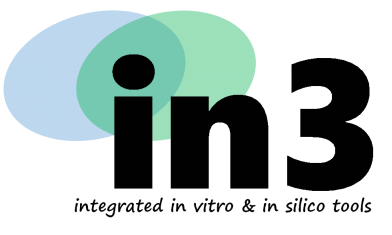
::home:: ::progress:: ::partners:: ::training:: ::about in3:: .:ESTIV home:. .:in3 twitter page:.
The in3 project is funded by the EU's Marie Sklodowska-Curie Action - Innovative Training Network (MSCA-ITN for short) that aims to drive the synergistic development and utilisation of in vitro and in silico tools for human chemical and nanomaterial (NM) safety assessment.
Virtual meeting December 2020 content.
Coordinator: Prof. Dr. Paul Jennings
p.jennings@vu.nl
Training coordinator: Dr. Maxime Culot
maxime.culot@univ-artois.fr
Project manager: Dr. Ellen Langemeijer
e.v.langemeijer@vu.nl
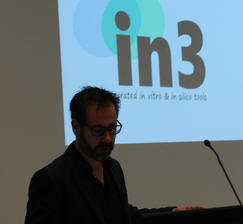


 in3 Publications
in3 Publications
The following are the in3 peer reviewed papers we have to date. But we have a lot more on the way and we will have a special issue soon in Toxicology in vitro.
- Caballero-Alfonso, A.Y., Cruz-Monteagudo, M., Tejera, E., Benfenati, E., Borges, F., Cordeiro, M.N.D.S., Armijos-Jaramillo, V., Perez-Castillo, Y., 2019. Ensemble-Based Modeling of Chemical Compounds with Antimalarial Activity. Curr. Top. Med. Chem. 19, 957–969. https://doi.org/10.2174/1568026619666190510100313
- Chandrasekaran, V., Carta, G., da Costa Pereira, D., Gupta, R., Murphy, C., Feifel, E., Kern, G., Lechner, J., Cavallo, A.L., Gupta, S., Caiment, F., Kleinjans, J.C.S., Gstraunthaler, G., Jennings, P., Wilmes, A., 2021. Generation and characterization of iPSC-derived renal proximal tubule-like cells with extended stability. Sci. Rep. 11. https://doi.org/10.1038/s41598-021-89550-4
- Chayawan, C., Toma, C., Benfenati, E., Caballero Alfonso, A.Y., 2020. Towards an understanding of the mode of action of human aromatase activity for azoles through quantum chemical descriptors-based regression and structure activity relationship modeling analysis. Molecules 25. https://doi.org/10.3390/molecules25030739
- Djidrovski, I., Georgiou, M., Hughes, G.L., Patterson, E.I., Casas-Sanchez, A., Pennington, S.H., Biagini, G.A., Moya-Molina, M., van den Bor, J., Smit, M.J., Chung, G., Lako, M., Armstrong, L., 2021. SARS-CoV-2 infects an upper airway model derived from induced pluripotent stem cells. Stem Cells 39, 1310–1321. https://doi.org/10.1002/stem.3422
- Fransen, L.F.H., Leonard, M.O., 2021. CD34+ derived macrophage and dendritic cells display differential responses to paraquat. Toxicol. Vitr. 75. https://doi.org/10.1016/j.tiv.2021.105198
- Gadaleta, D., Vuković, K., Toma, C., Lavado, G.J., Karmaus, A.L., Mansouri, K., Kleinstreuer, N.C., Benfenati, E., Roncaglioni, A., 2019. SAR and QSAR modeling of a large collection of LD50 rat acute oral toxicity data. J. Cheminform. 11. https://doi.org/10.1186/s13321-019-0383-2
- Lagares, L.M., Minovski, N., Alfonso, A.Y.C., Benfenati, E., Wellens, S., Culot, M., Gosselet, F., Novič, M., 2020. Homology modeling of the human p-glycoprotein (Abcb1) and insights into ligand binding through molecular docking studies. Int. J. Mol. Sci. 21, 1–37. https://doi.org/10.3390/ijms21114058
- Lagares, L.M., Minovski, N., Novič, M., 2019. Multiclass classifier for P-glycoprotein substrates, inhibitors, and non-active compounds. Molecules 24. https://doi.org/10.3390/molecules24102006
- Fransen LFH, Leonard MO., 2021. Small Airway Susceptibility to Chemical and Particle Injury. Respiration. 1–13. https://doi.org/10.1159/000519344
- Lopes, H., Proença, S., 2020. Insights into PCDD/Fs and PAHs in biomass boilers envisaging risks of ash use as fertilizers. Appl. Sci. 10. https://doi.org/10.3390/app10144951
- Proença, S., Escher, B.I., Fischer, F.C., Fisher, C., Grégoire, S., Hewitt, N.J., Nicol, B., Paini, A., Kramer, N.I., 2021. Effective exposure of chemicals in in vitro cell systems: A review of chemical distribution models. Toxicol. Vitr. 73. https://doi.org/10.1016/j.tiv.2021.105133
- Rauch, C., Feifel, E., Kern, G., Murphy, C., Meier, F., Parson, W., Beilmann, M., Jennings, P., Gstraunthaler, G., Wilmes, A., 2018. Differentiation of human iPSCs into functional podocytes. PLoS One 13. https://doi.org/10.1371/journal.pone.0203869
- Singh, P., Chandrasekaran, V., Hardy, B., Wilmes, A., Jennings, P., Exner, T.E., 2021. Temporal transcriptomic alterations of cadmium exposed human iPSC-derived renal proximal tubule-like cells. Toxicol. Vitr. 76. https://doi.org/10.1016/j.tiv.2021.105229
- Spinu, N., Bal-Price, A., Cronin, M.T.D., Enoch, S.J., Madden, J.C., Worth, A.P., 2019. Development and analysis of an adverse outcome pathway network for human neurotoxicity. Arch. Toxicol. 93, 2759–2772. https://doi.org/10.1007/s00204-019-02551-1
- Spinu, N., Cronin, M.T.D., Enoch, S.J., Madden, J.C., Worth, A.P., 2020. Quantitative adverse outcome pathway (qAOP) models for toxicity prediction. Arch. Toxicol. 94, 1497–1510. https://doi.org/10.1007/s00204-020-02774-7
- Vukovic, K., Gadaleta, D., Benfenati, E., 2019. Methodology of AiQSAr: A group-specific approach to QSAR modelling. J. Cheminform. 11. https://doi.org/10.1186/s13321-019-0350-y
- Wellens, S., Dehouck, L., Chandrasekaran, V., Singh, P., Loiola, R.A., Sevin, E., Exner, T., Jennings, P., Gosselet, F., Culot, M., 2021. Evaluation of a human iPSC-derived BBB model for repeated dose toxicity testing with cyclosporine A as model compound. Toxicol. Vitr. 73. https://doi.org/10.1016/j.tiv.2021.105112
- Pamies D, Sartori C, Schvartz D, González-Ruiz V, Pellerin L, Nunes C, Tavel D, Maillard V, Boccard J, Rudaz S, Sanchez JC, Zurich MG. Neuroinflammatory Response to TNFα and IL1β Cytokines Is Accompanied by an Increase in Glycolysis in Human Astrocytes In Vitro. Int J Mol Sci. 2021 Apr 14;22(8):4065. doi: 10.3390/ijms22084065. PMID: 33920048
 in3 dissemination and training
in3 dissemination and training
See our very active twitter feed for dissemination actions ![]() . Below are a few higlights.
. Below are a few higlights.


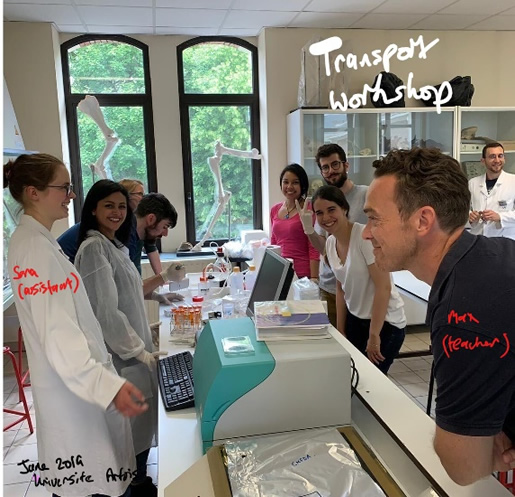
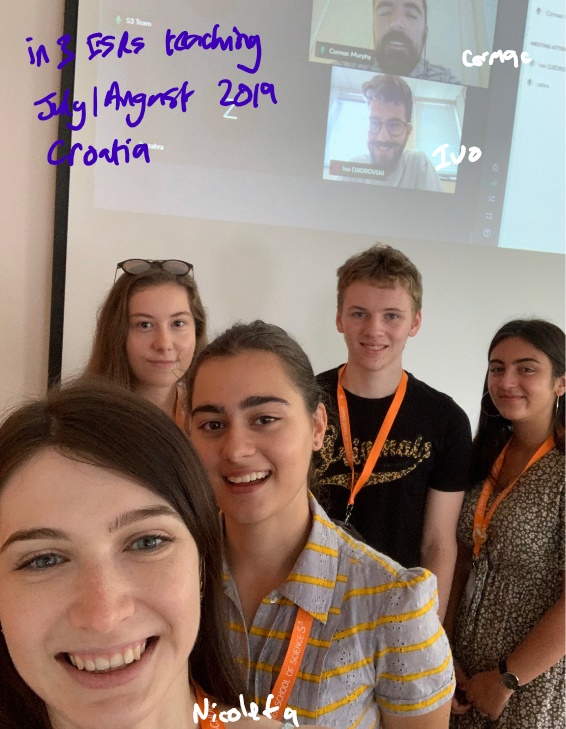


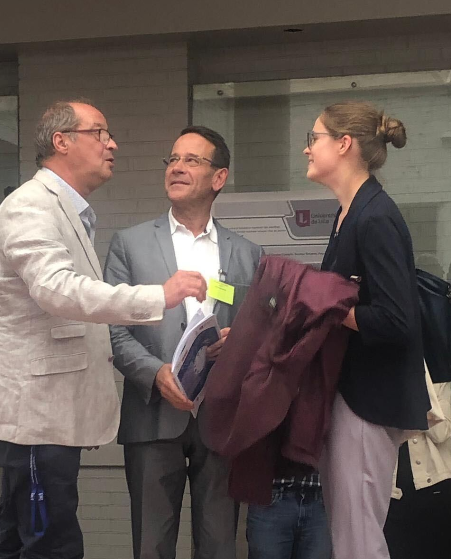


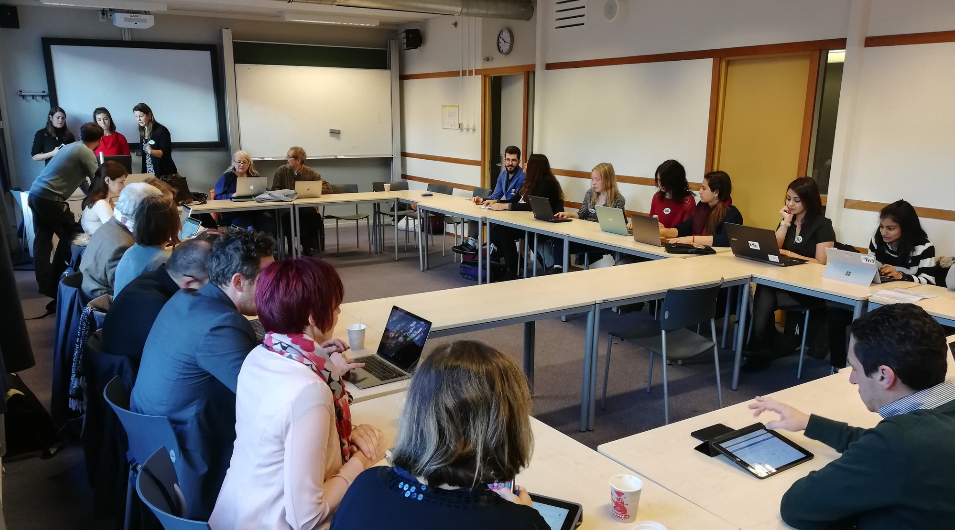
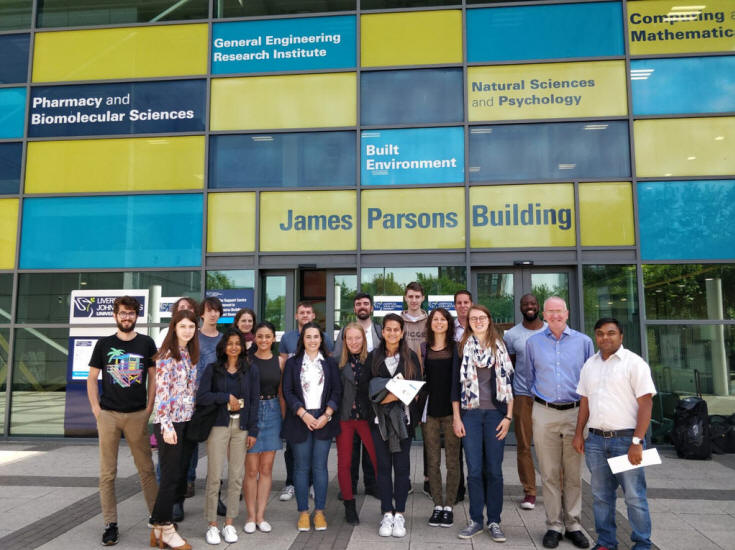
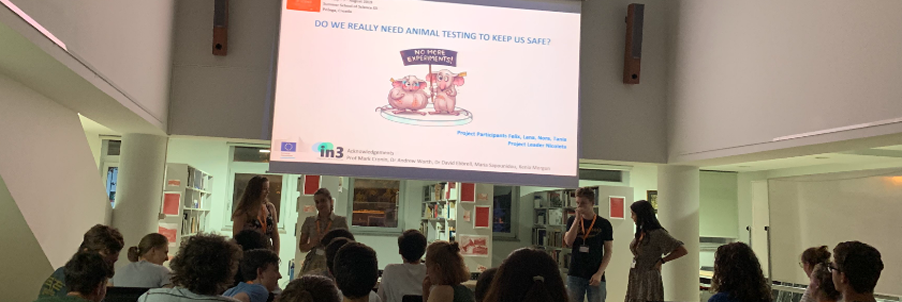
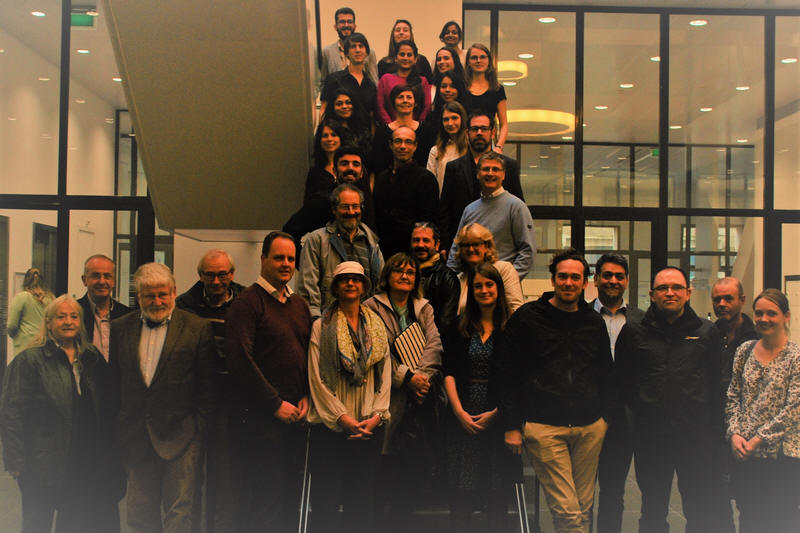
 |
in3 is funded by the Marie Sklodowska-Curie Action - Innovative Training Network under grant no. 721975. |
